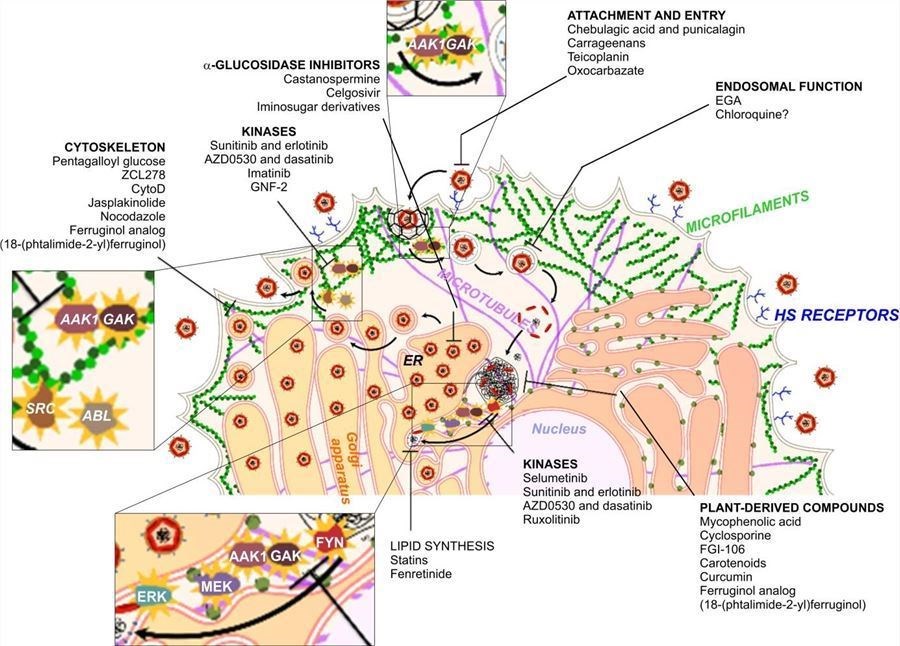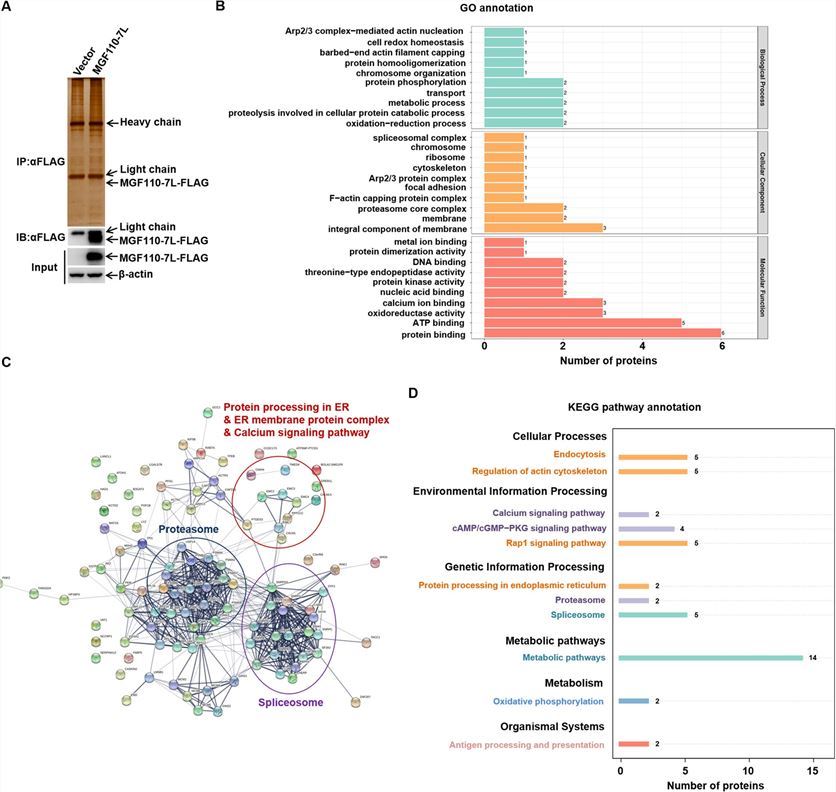Virus Pathogenesis Mechanism and Cell Host Factor Investigation Service
In today's challenging field of virus infection research, Creative Biolabs, with its leading technology and expertise, is committed to providing services in investigating virus pathogenic mechanisms and host cell factors. Our services are not limited to basic laboratory techniques, but encompass extensive research from the molecular to the systemic level, offering clients comprehensive and precise data and analysis.
 Fig.1 Host factors required for RNA virus entry and propagation.1,3
Fig.1 Host factors required for RNA virus entry and propagation.1,3
Comprehensive Research Services on Virus and Host Cell Interaction Mechanisms
Our services focus on utilizing cutting-edge technology to analyze the molecular mechanisms of interactions between viruses and host cells. This includes, but is not limited to:
-
Research-grade Virus Construction: We employ advanced molecular cloning and genetic engineering techniques to construct research-grade viruses, including pseudoviruses, virus-like particles, and recombinant virus proteins. This process enables us to precisely explore the functions of specific genes or proteins, laying a solid foundation for understanding the complex mechanisms of virus-host cell interactions.
-
Bioinformatics Analysis: We use bioinformatics tools to analyze genomic, transcriptomic, and proteomic data, thereby constructing a global map of virus-host interactions. This comprehensive analysis helps to reveal the deeper mechanisms of virus infection, providing a solid foundation for future therapeutic research.
-
Classic Western Blot Techniques: We employ Western Blot techniques to detect and analyze the expression and modification of proteins in viruses and host cells. This technique provides crucial information about protein-level interactions, aiding in a deeper understanding of the essence of virus biology.
-
Immunofluorescence and Confocal Microscopy: Using these advanced microscopy techniques, we can accurately observe the localization of viruses within host cells and their interactions with cellular components. These techniques offer valuable spatial resolution data, helping to reveal how viruses manipulate host cells.
-
Flow Cytometry: Through flow cytometry, we can analyze the expression of cell surface markers and the infection and replication status of viruses within cells. This technique provides key insights into the mechanisms of virus invasion and proliferation.
-
Featured SPR/BLI Molecular Interaction Detection: We use SPR and BLI techniques to precisely monitor direct interactions between virus proteins and host cell molecules. These techniques provide real-time, label-free data on molecular affinity and binding kinetics, crucial for understanding how viruses invade host cells.
-
SPR (Surface Plasmon Resonance) Technique: Detects molecular interactions by measuring changes in the reflection angle of light on a metal surface. This technique allows real-time, label-free monitoring of molecular binding and dissociation processes, providing information on affinity, binding kinetics, and concentration.
-
BLI (Bio-Layer Interferometry) Technique: Uses biosensor chips to monitor molecular binding, detecting interactions by measuring changes in the interference pattern of light on a biological layer. BLI also provides real-time, label-free analysis, suitable for studying a wide range of molecular interactions.
-
Target Gene Expression Regulation: By using RNA interference and gene editing techniques, we can knock out or edit host genes to study their roles in the virus infection process. This further reveals the complex interactions between viruses and host cells.
 Fig.2 Proteomics analysis of African swine fever virus MGF110-7L-host interactome.2,3
Fig.2 Proteomics analysis of African swine fever virus MGF110-7L-host interactome.2,3
Through these techniques, we can precisely study the functions of specific genes or proteins, detect and analyze the expression and modification of proteins in viruses and host cells, and observe the localization of viruses within cells and their interactions with host cell components.
Contact us for more information
Creative Biolabs has extensive experience and expertise to provide high-quality interaction analysis services, offering comprehensive solutions for virus-host cell interaction mechanisms. If you are interested in our services or need further information and consultation, please feel free to contact us.
References:
-
Roa-Linares, VC.; et al. Host cell targets for unconventional antivirals against RNA viruses. Viruses. 2023, 15(3).
-
Zhong, H.; et al. African swine fever virus MGF110-7L induces host cell translation suppression and stress granule formation by activating the PERK/PKR-eIF2α pathway. Microbiology Spectrum. 2022, 10(6):e0328222.
-
under Open Access license CC BY 4.0, without modification.
For Research Use Only. We do not provide direct services or products for patients.
Related Services:
 Fig.1 Host factors required for RNA virus entry and propagation.1,3
Fig.1 Host factors required for RNA virus entry and propagation.1,3
 Fig.2 Proteomics analysis of African swine fever virus MGF110-7L-host interactome.2,3
Fig.2 Proteomics analysis of African swine fever virus MGF110-7L-host interactome.2,3